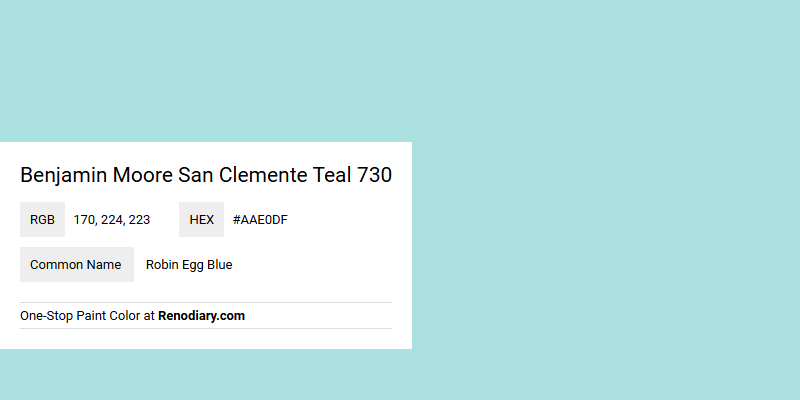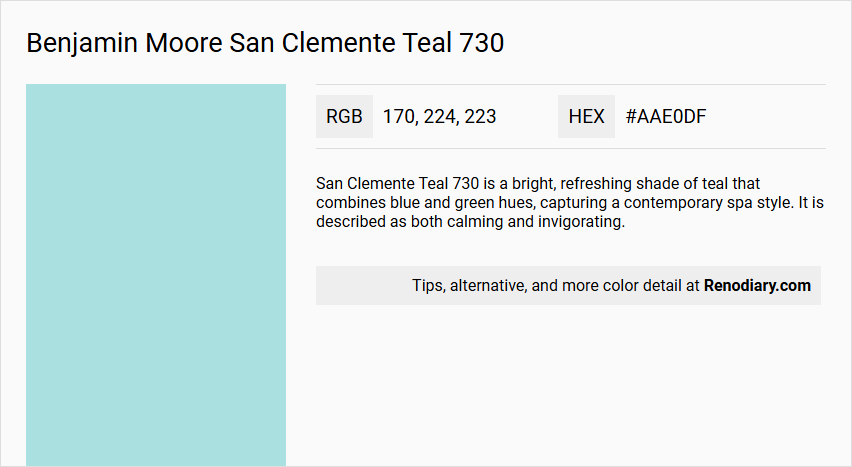
Benjamin Moore's San Clemente Teal 730, with its RGB composition of 170, 224, 223, beautifully captures the essence of tranquility and subtle sophistication. Often likened to the serene hue of Robin Egg Blue, this color exudes a calming presence that's perfect for creating a peaceful atmosphere in any space. Its delicate balance between blue and green adds a refreshing yet soothing touch, ideal for both contemporary and classic interior designs.
Color Description
San Clemente Teal 730 is a bright, refreshing shade of teal that combines blue and green hues, capturing a contemporary spa style. It is described as both calming and invigorating.
Undertones
The color has blue-green undertones, which contribute to its calming yet invigorating effect.
Color Values
The Light Reflective Value (LRV) of San Clemente Teal 730 is 66.73 (or 67.52 in some sources), indicating that it reflects a moderate amount of light.
Usage
This color is ideal for reinvigorating any space and can be used in various rooms to create a spa-like atmosphere. It is suitable for walls, and can also be paired with other colors for trim, doors, and cabinetry.
Atmosphere
San Clemente Teal 730 exudes tranquility and is designed to create a calming and refreshing environment, making it perfect for spaces where relaxation is desired.
Benjamin Moore San Clemente Teal 730 Color Alternative
Benjamin Moore San Clemente Teal 730 is a unique hue that inspires creativity and refreshment in any design space. Designers looking to expand their palette can consider alternatives like Sherwin Williams Spa SW 6765, which complements the original with its equally inviting tone. In addition, options such as RAL Effect RAL 190-1 and RAL Effect RAL 720-2 offer stylistic variations while preserving the dynamic spirit of Benjamin Moore San Clemente Teal 730.
Bathroom
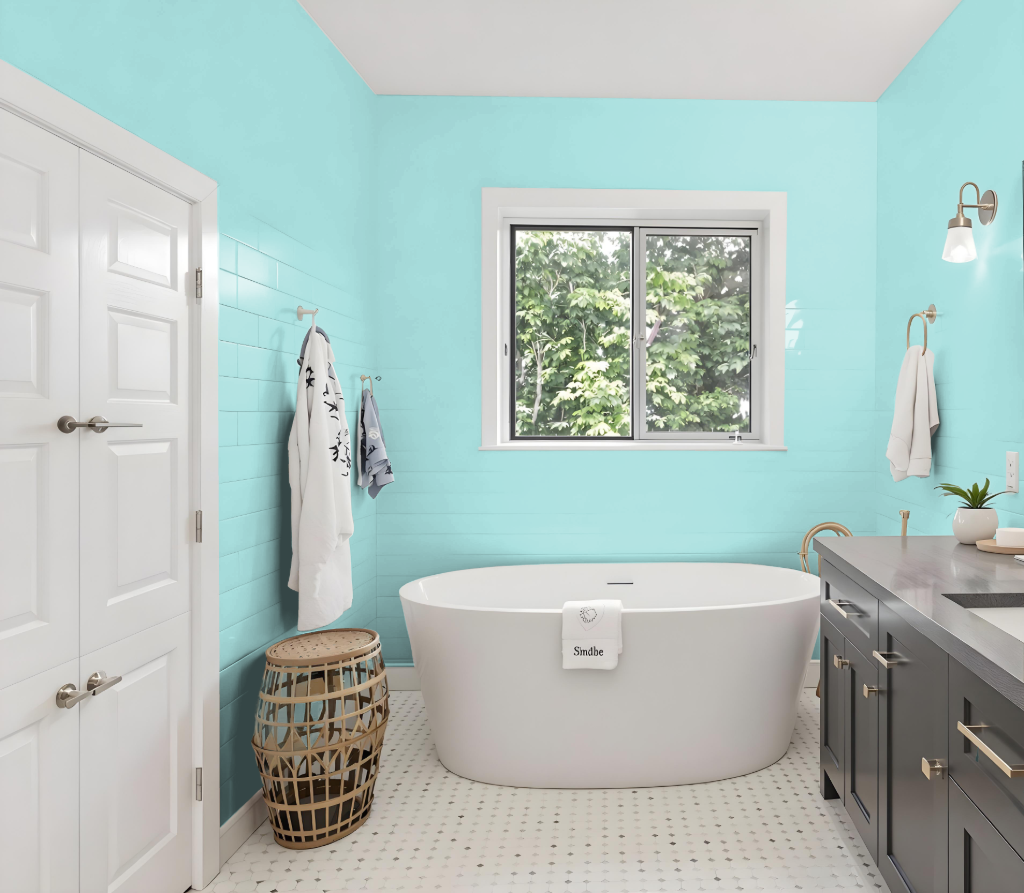
Benjamin Moore's San Clemente Teal 730 is a well-regarded bathroom color known for its ability to create a fresh, calming atmosphere. Its excellent performance in humid spaces makes it a practical selection for bathrooms and spas, as it resists mildew and remains inviting over time.
This distinctive hue pairs beautifully with a variety of decor styles, harmonizing with earthy accents like sandy tones and deep browns, or balancing with soft whites and warm greys to enhance its serene character. For areas with high moisture and frequent use, a finish that ensures easy cleaning and durability is highly recommended.
Bedroom
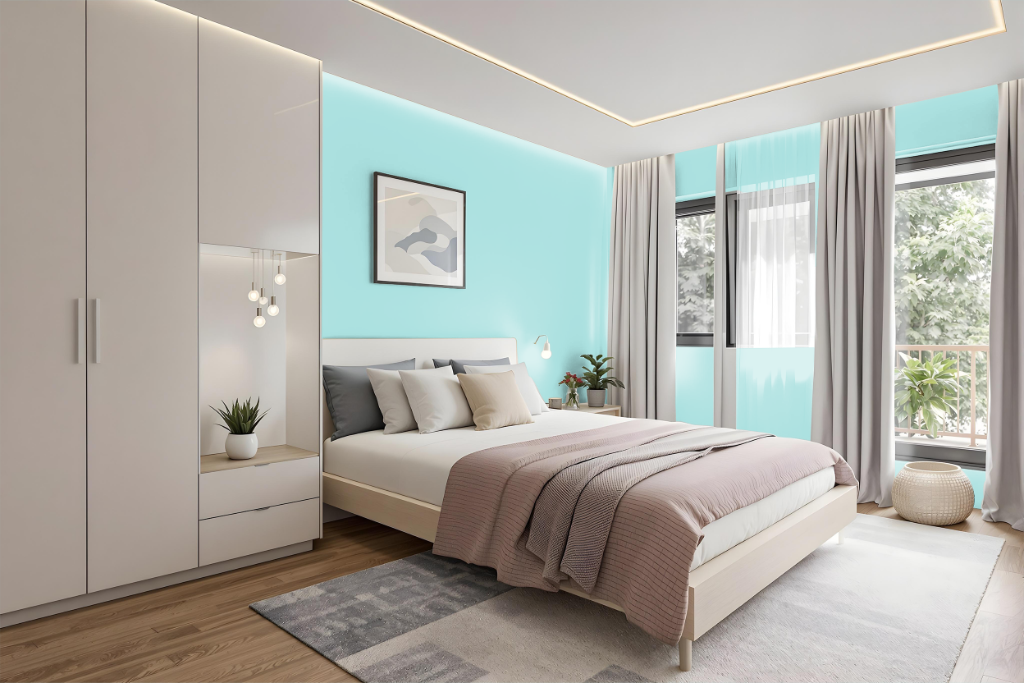
Benjamin Moore's San Clemente Teal offers a serene and calming backdrop for a bedroom, establishing an inviting and tranquil atmosphere. Its refined hue works beautifully with both traditional and modern decor styles, enhancing the room’s character while offering a soothing visual experience.
For optimal balance, this color is best paired with lighter shades on trim and ceilings, creating a harmonious contrast that adds depth without overwhelming the space. Using a softly polished finish on the walls complements natural elements and gentle lighting, cultivating an environment designed for relaxation and rejuvenation.
Kitchen
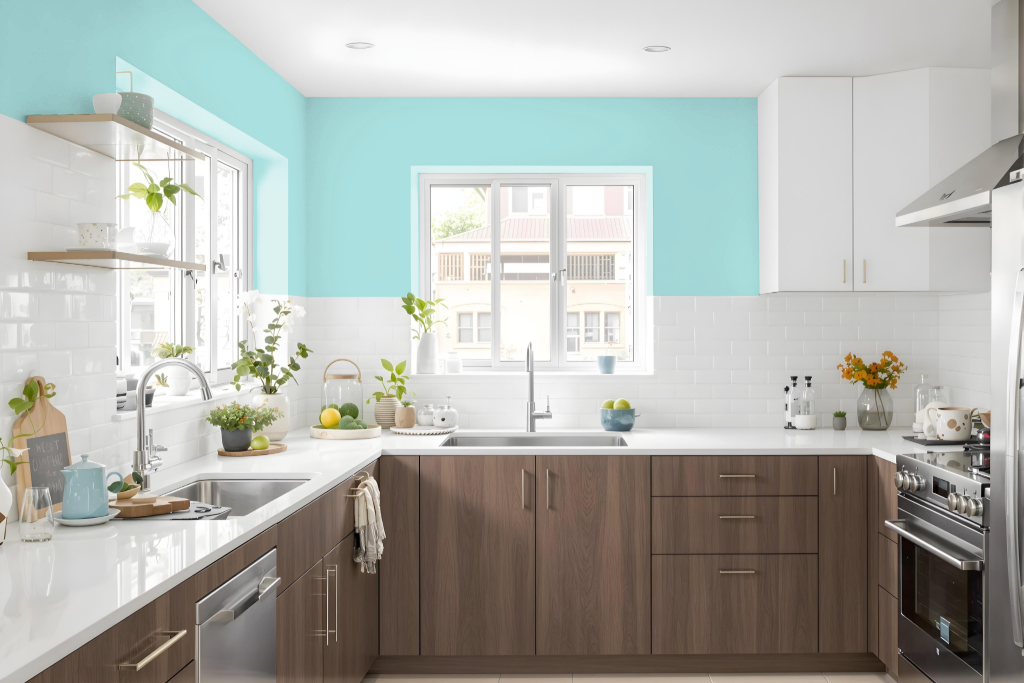
Benjamin Moore's San Clemente Teal is a captivating kitchen color that brings sophistication and an inviting ambiance to your space. It pairs beautifully with earthy tones, such as sandy beige and rich brown, and works excellently on cabinetry or a statement wall, establishing an engaging focal point that draws attention.
To amplify the serene atmosphere, integrate soft whites or warm greys as accents to balance the bold presence of San Clemente Teal. Introducing complementary hues with subtle red undertones, as well as layering in additional shades from its blue and green spectrum, helps create a cohesive design that is both refreshing and dynamic.
Living Room
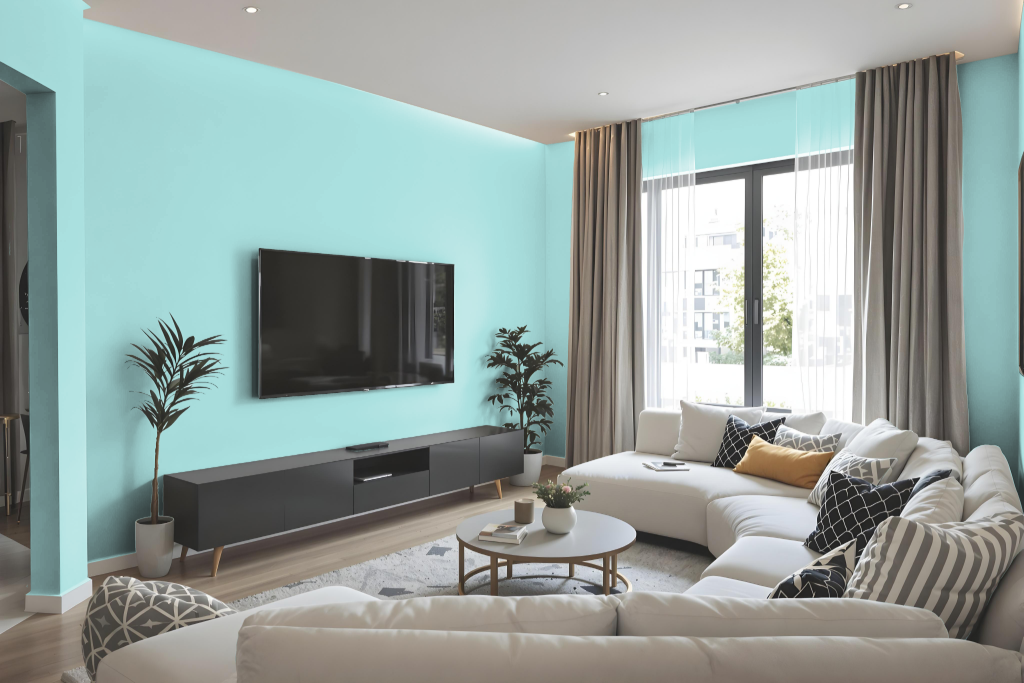
Benjamin Moore San Clemente Teal 730 is an elegant color choice for a living room, setting a sophisticated and calming tone. Pair it with earthy tones like sandy beiges and rich browns for a timeless effect, while soft whites and warm greys help maintain an inviting atmosphere.
Elevate the overall design by matching complementary shades for trim and ceilings, ensuring a cohesive look. Incorporate additional accent colors from either a monochromatic palette or contrasting hues to add depth and visual interest to your space.
Outdoor
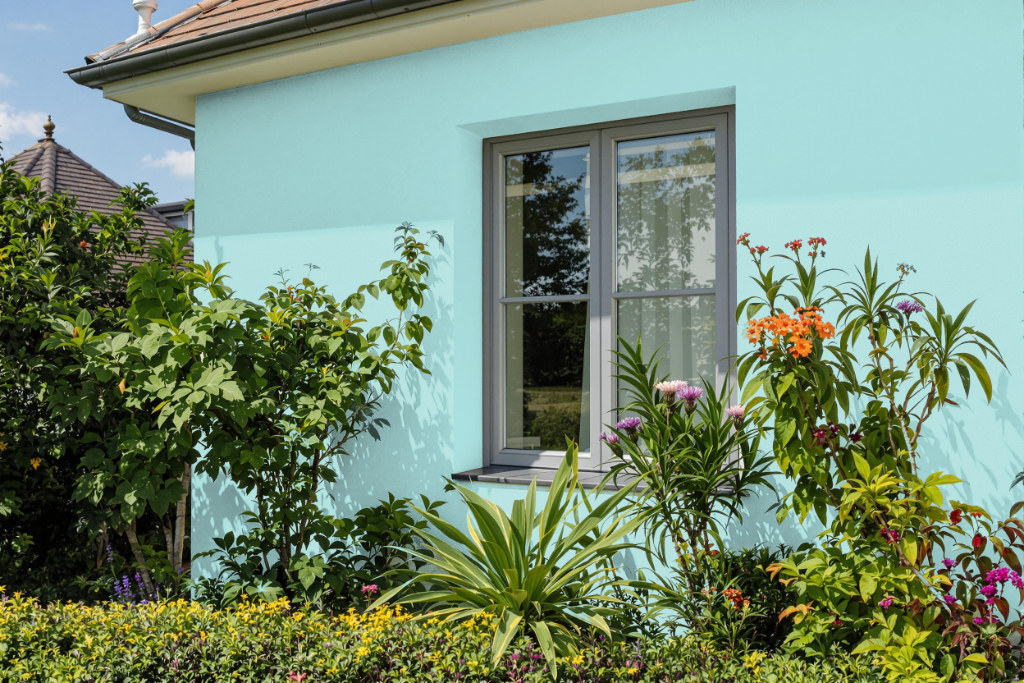
For home outdoor color, Benjamin Moore's San Clemente Teal 730 presents an appealing option, although in its standard form it is designed primarily for interior spaces. The regular paint versions are not formulated to endure the challenges of direct sun exposure and varying weather conditions, making them unsuitable for outdoor applications without modification.
To safely incorporate this color into an exterior setting, it is recommended to use the specially engineered Element Guard Exterior Paint available in this shade. This exterior formulation is crafted to resist wind-driven rain, humidity, and moisture, offering quick rain resistance and an effective mildewcide to protect against various forms of moisture damage.
